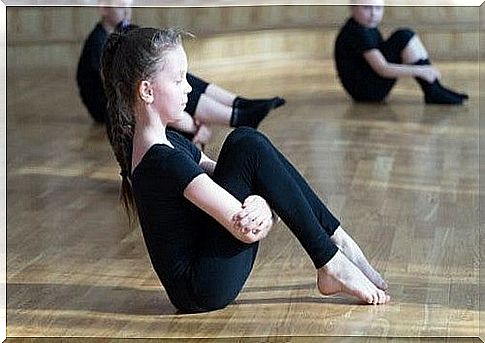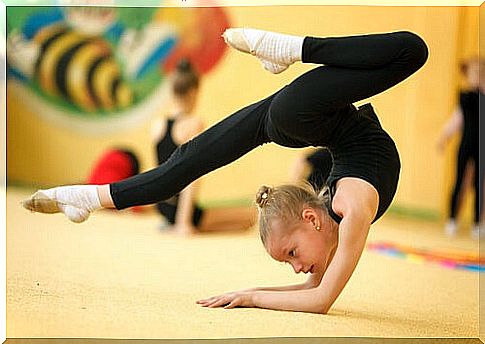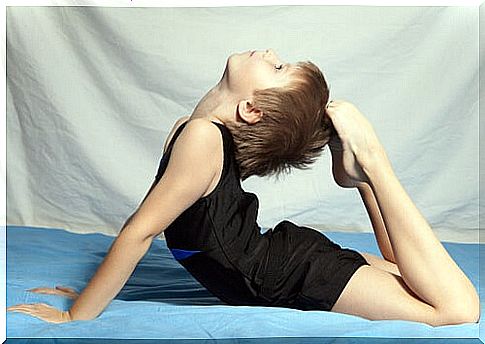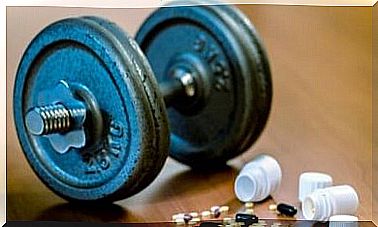The Benefits Of Rhythmic Gymnastics For Children

Rhythmic gymnastics is a sport that combines ballet and ballet movements with acrobatics and the use of tools such as ribbons, balls and hoops. Although many doubt that it is beneficial to practice it as a child, the benefits of rhythmic gymnastics for children are manifold.
Probably not one of the favorite sports of the little ones, but rhythmic gymnastics should be part of the range of possibilities that are offered to them.
In general, it is recommended that children start practicing this discipline only after they are 6 years old. Before that, they will have a hard time doing the basic exercises required by this sport. Furthermore, at that age, they begin to develop spatial orientation and are already able to master their body.
Rhythmic gymnastics is also an activity suitable for boys and girls , although in the world it is practiced mostly by women. It can be done individually or in a group, which can be made up of two, three, four or five elements.
Benefits of rhythmic gymnastics for children
As demanding as it is, rhythmic gymnastics is a sporting activity that offers the following benefits to those who practice it:
1. Improve physical condition and flexibility
If you have had the opportunity to see the movements that are performed in rhythmic gymnastics exercises, you will surely know what we mean. It is a discipline that involves difficult movements. The different exercises help develop children’s elasticity and prevent them from losing it over time.
Similarly, the stability it requires contributes to muscle strengthening. It favors the elimination of calories and like any physical activity, it increases appetite and improves rest.

2. Makes the baby feel in harmony with his own body and environment
In addition to the physical requirements, rhythmic gymnastics relies on the aesthetic factor. In this way the little ones are perfectly aware of the movements they make, as well as placing themselves in an excellent way in time and space.
Thanks to rhythmic gymnastics, incorrect postures can be corrected and, consequently, injuries can be avoided. This sport also promotes balance.
3. Improve concentration
The benefits deriving from the practice of rhythmic gymnastics are not only physical. Being a sport that requires you to follow a precise schedule in advance, the child cannot be distracted from what he is doing. This means that it also makes memory and attention work. It is undoubtedly a discipline that makes the body work in its totality.
4. Stimulates coordination
Another element present in rhythmic gymnastics is music. In addition to developing the sense of hearing, the child will find himself in the position of having to coordinate his movements based on the sound he hears.
5. Improve the quality of life
The sum of the benefits of rhythmic gymnastics for children previously described will result in a better mood for them. In addition to keeping active, practicing this discipline will develop proprioception, self-esteem and self-confidence.
Similarly, they will begin to relate to peers and instructors. They will learn the value of work, mutual help and fun together with others.

Rumors against rhythmic gymnastics
In addition to the benefits of rhythmic gymnastics, the arguments of those who are against this sport must also be considered. Although it is generally recommended to start after age 4, many say that even after age 4 the child is still small.
The main discussion has to do with the demands that this sport places on such young children. By needs we mean physical ones, with complicated and sometimes risky movements. But not only. There are also mental needs: remember that children have to memorize and synchronize complex steps.
Rhythmic gymnastics has also been linked to physical problems, such as the delay in the onset of menarche. Some studies carried out on sports champions in the past decades have confirmed this effect of rhythmic gymnastics, which is added to the cons of any other sport: possible injuries.
Furthermore, competing and being judged by a jury – sometimes too severe – can be difficult for children to accept. Much more, of course, if the qualification is not the desired one.
However, everything will depend on the level of demand that is exercised on the boys and girls who practice this sport. As in any other childhood sports activity, the playful aspect must be prioritized and emphasis placed on the correct development of the child’s skills.









